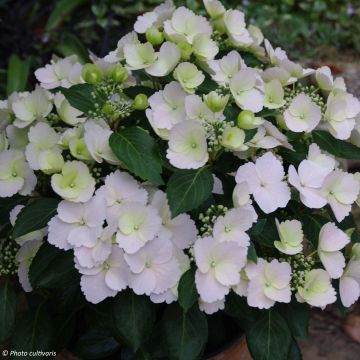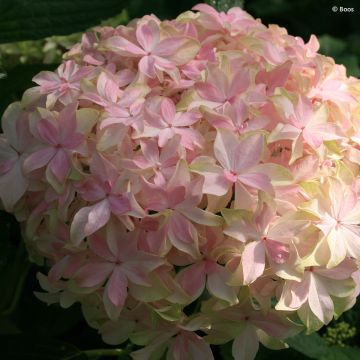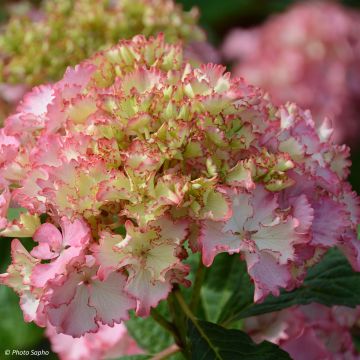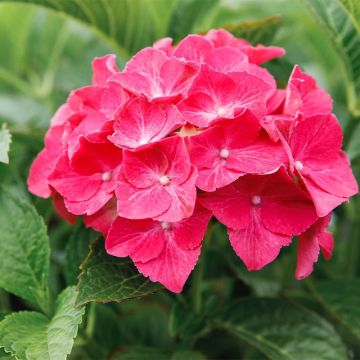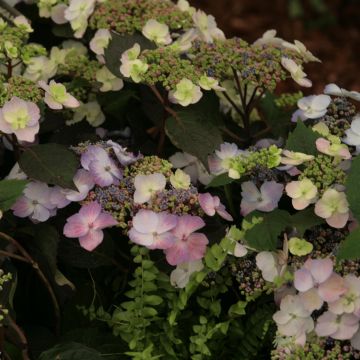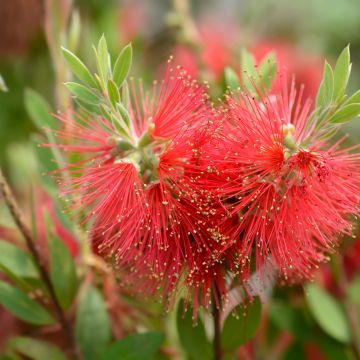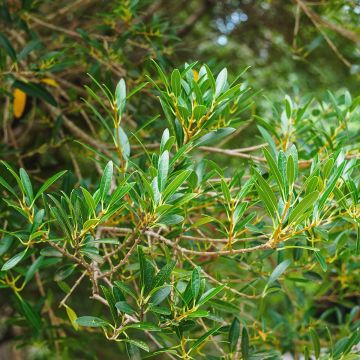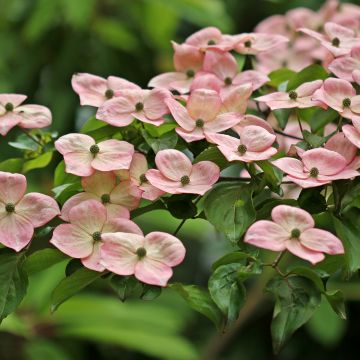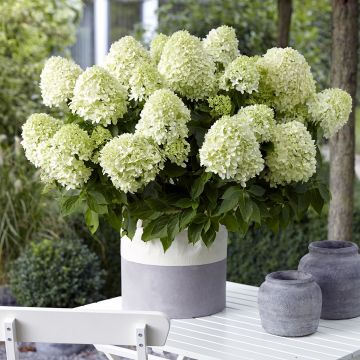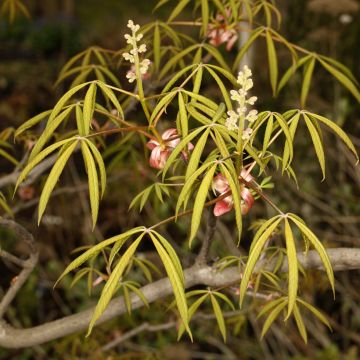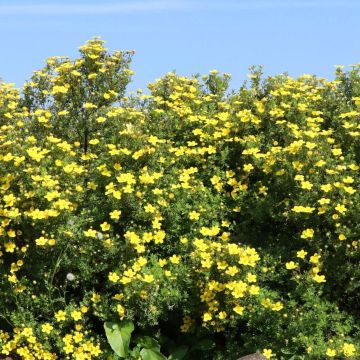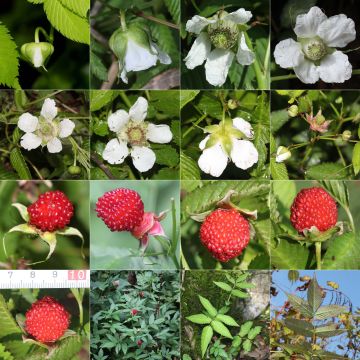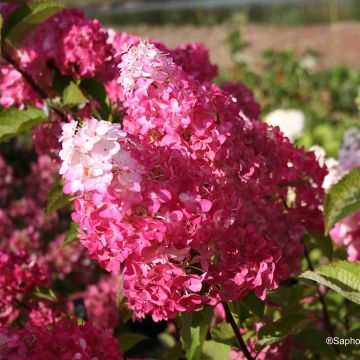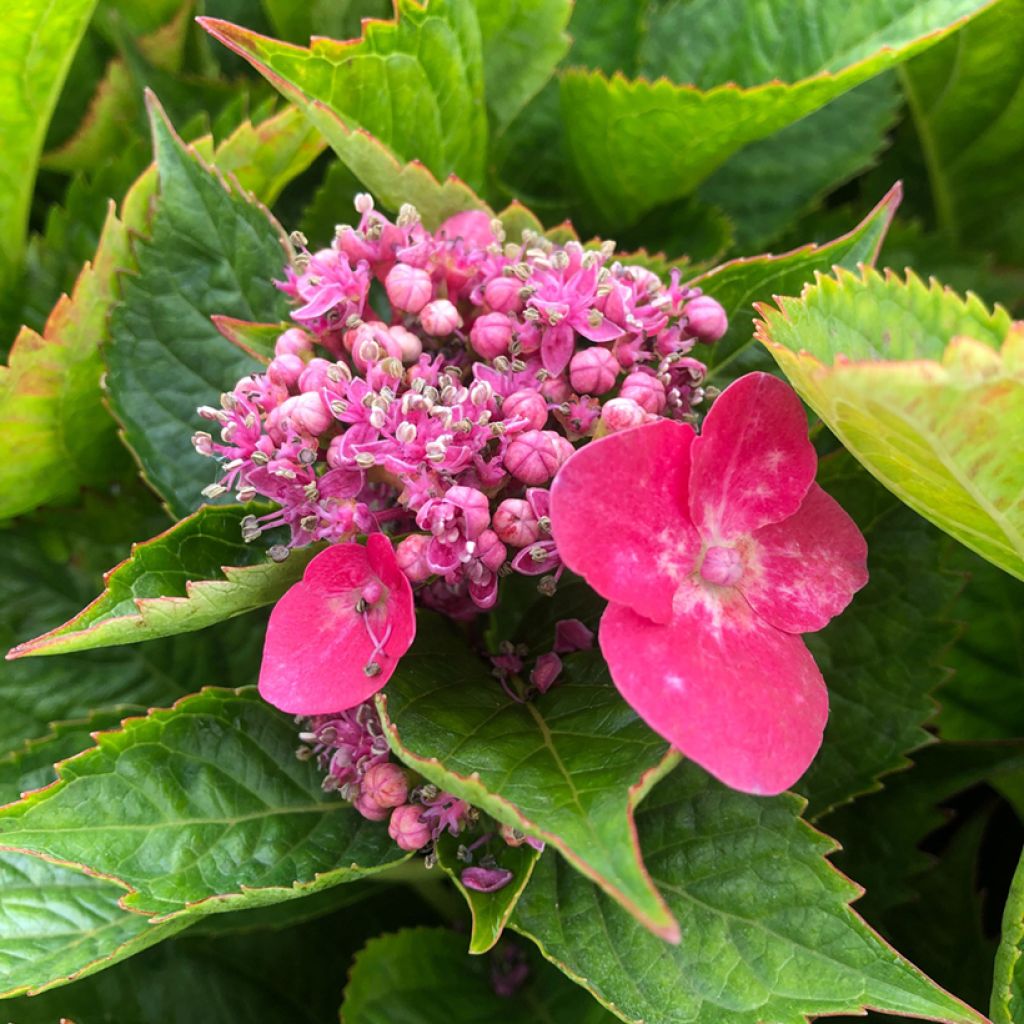

Hydrangea macrophylla Teller Kardinal
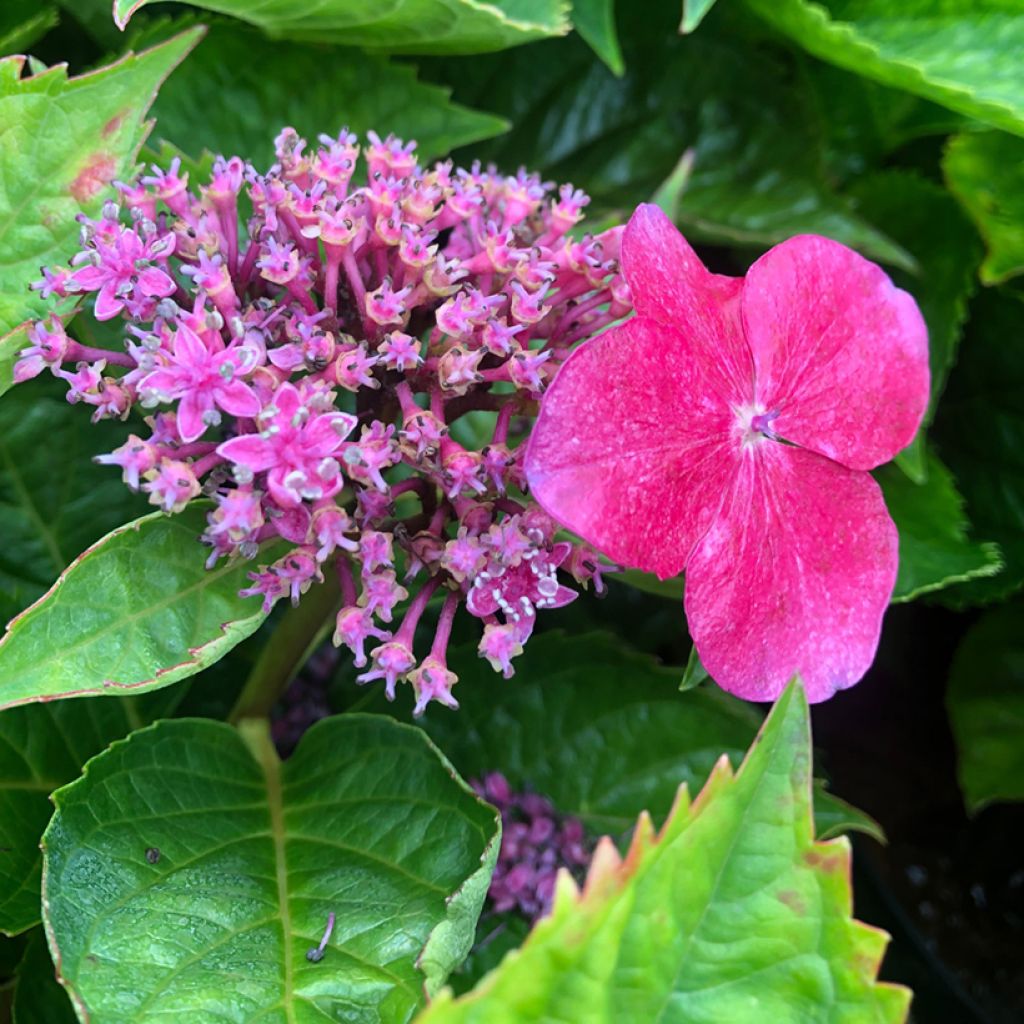

Hydrangea macrophylla Teller Kardinal
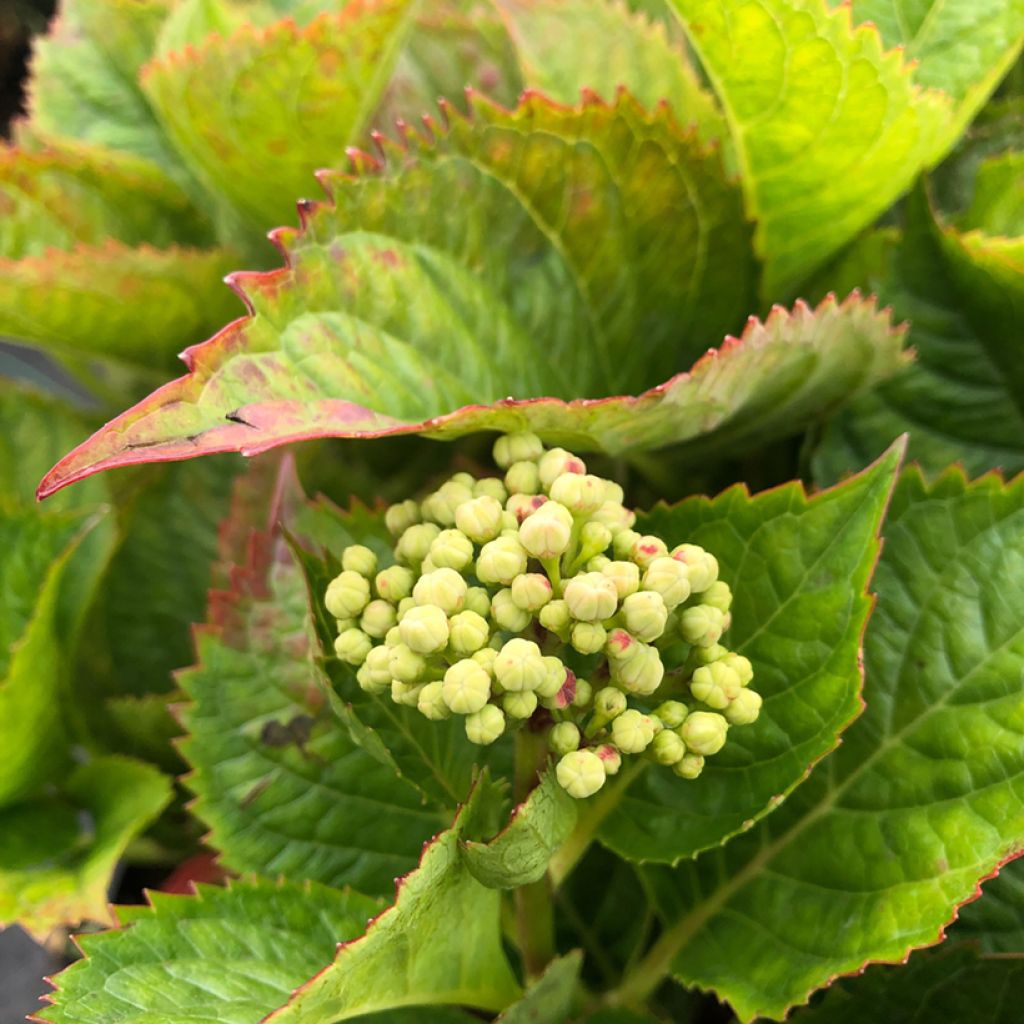

Hydrangea macrophylla Teller Kardinal
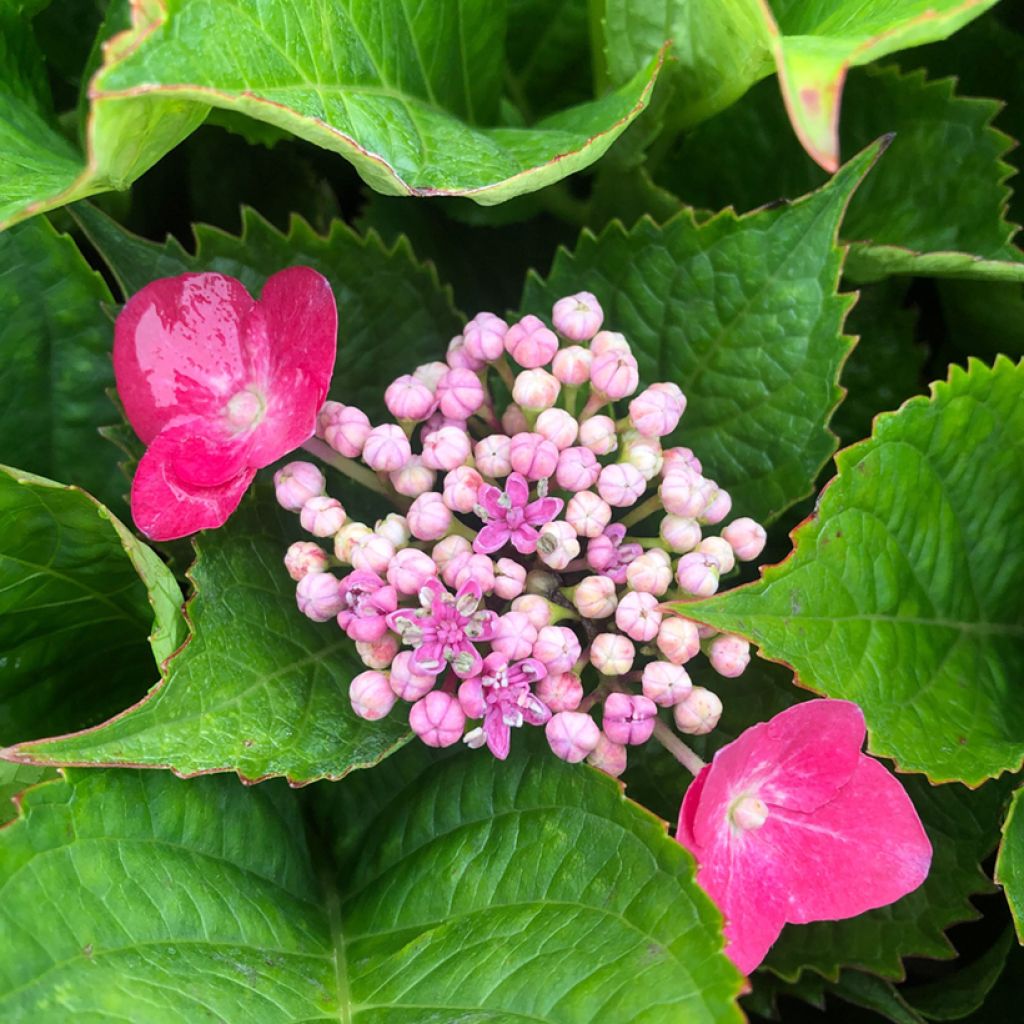

Hydrangea macrophylla Teller Kardinal
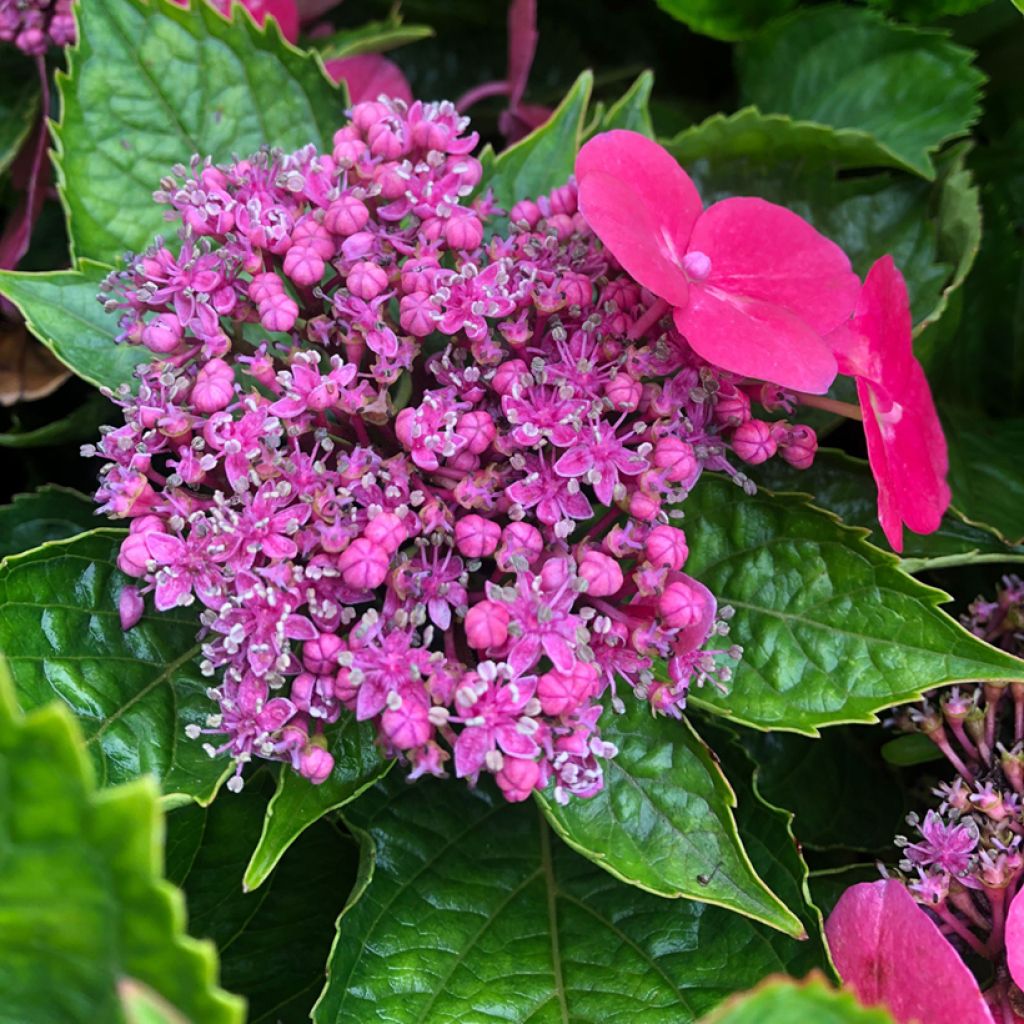

Hydrangea macrophylla Teller Kardinal
Hydrangea macrophylla Teller Kardinal
Hydrangea macrophylla Teller Kardinal
Bigleaf Hydrangea, French Hydrangea
Great recovery
Annie, 23/09/2024
This item cannot be shipped to the selected country
Delivery charge from €5.90
More information
Schedule delivery date,
and select date in basket
This plant carries a 24 months recovery warranty
More information
We guarantee the quality of our plants for a full growing cycle, and will replace at our expense any plant that fails to recover under normal climatic and planting conditions.
From €5.90 for pickup delivery and €6.90 for home delivery
Express home delivery from €8.90.


Does this plant fit my garden?
Set up your Plantfit profile →
Description
Hydrangea macrophylla Teller 'Kardinal', or Hortensia, is a vigorous variety with flat and red inflorescences. It adds interest to gently sunny areas of the garden where its beautiful flowers attract attention. This variety forms a ramified bush, producing large flat inflorescences formed of a crown of bright red florets surrounding a core of bluish buds in acidic soil, red in neutral soil. The plant has the advantage of re-flowering during the summer, from lateral buds. Thick, vibrant green foliage adorns the sturdy stems of this tall bush. It is superb in semi-shaded beds, in non-calcareous soil.
Hydrangea macrophylla Teller 'Kardinal' is part of a series of 'lace-cap' hybrids, with flat inflorescences that bloom at the end of the branches, as well as from lateral buds. The branches are sturdy and ramified, and the flowering is abundant. These hardy plants are derived from the cross-breeding of the species H. macrophylla and H. aspera, among others. All these plants belong to the Hydrangeaceae family, native to China and Japan. 'Kardinal' has a rather well-structured, compact and rounded habit. It reaches a height of about 1.4m (5ft) at maturity, slightly less in width. From late June to September, its small fertile and sterile flowers, with striking dimorphism, form flat inflorescences of 15 to 18cm (6 to 7in) in diameter. They are composed of sterile florets in shades of fuchsia to scarlet red with a small white centre, surrounding a core of fertile florets in white-green buds, taking on a different colouration depending on the soil's pH. In acidic soil, the fertile flowers will have bluer hues and the crown will appear more purplish. The flowering spreads over ample and shiny, vibrant green, deciduous foliage. The leaves are opposite, reaching a minimum length of about 20cm (8in). They are simple, ovate to elliptical, ending in a pointed tip, and coarsely toothed like a saw. Hydrangeas can live for at least 50 years.
'Kardinal' is a vigorous plant, with a solid appearance, whose intense colour creates a sensation in summer flower beds. It tolerates the sun quite well. Its only weakness lies in its short-lived flowering. Hydrangeas are well known for brightening the north side of houses. This one will thrive in a non-scorching east or west exposure, in flower beds as well as hedges. Even though these plants fear limestone, they are not strictly speaking ericaceous plants. Mix them with Magellan fuchsias or annual impatiens, or plant spring-flowering bulbs in front of their round silhouette. Enjoy their sumptuous flowering in the garden or in the house for a long time.
Report an error about the product description
Hydrangea macrophylla Teller Kardinal in pictures
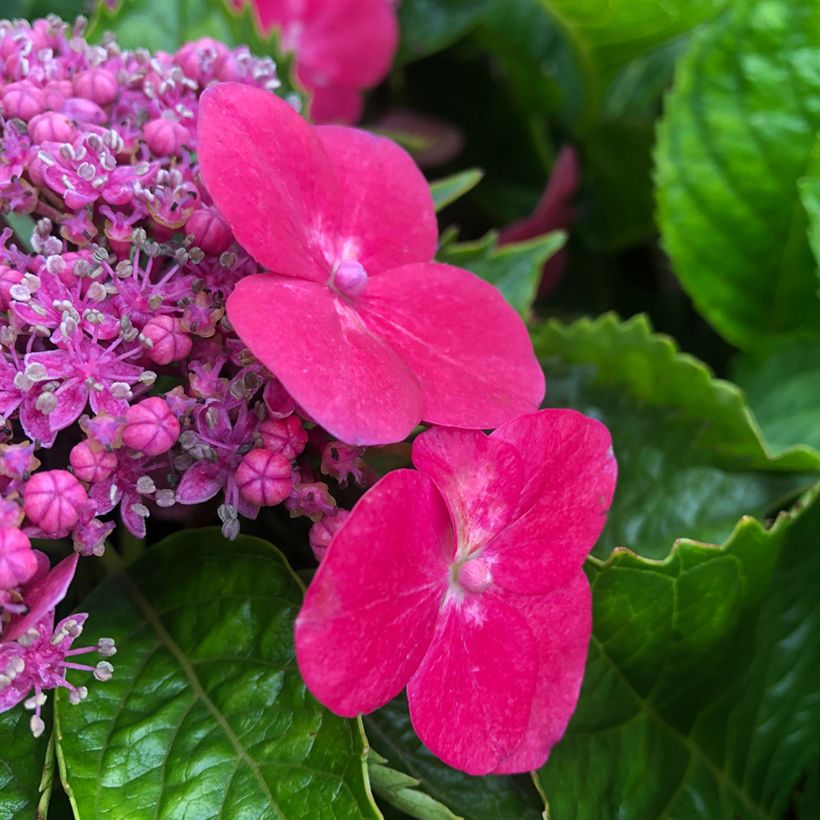

Plant habit
Flowering
Foliage
Botanical data
Hydrangea
macrophylla
Teller Kardinal
Hydrangeaceae
Bigleaf Hydrangea, French Hydrangea
Cultivar or hybrid
Other Hydrangea Macrophylla
Planting and care
Plant in spring or early autumn, preferably in a slightly shaded position, for example against an east-facing wall, or even north-facing. In very cold regions, it may be prudent to overwinter it in a cold greenhouse or in the conservatory. Protect it from cold and drying winds. It does not require ericaceous soil, but appreciates deep, moist but well-drained, fairly fertile soil, possibly enriched with a good base fertiliser before planting. If planting near a wall and the soil is dry at its base, place the root ball at least 30 to 40cm (12 to 16in) away from it and incorporate a quantity of well-decomposed compost to better retain moisture in the soil. Very hardy, it can be planted in cold regions without fear.
As for pruning, remove the faded flowers on the first bud or on the pair of buds directly below. When the plant is mature, prune the older stems back to the base by a quarter or a third. This will encourage the formation of young shoots. Carry out this pruning every year during March and April.
Planting period
Intended location
Care
-
, onOrder confirmed
Reply from on Promesse de fleurs
Summer-flowering shrubs
Haven't found what you were looking for?
Hardiness is the lowest winter temperature a plant can endure without suffering serious damage or even dying. However, hardiness is affected by location (a sheltered area, such as a patio), protection (winter cover) and soil type (hardiness is improved by well-drained soil).

Photo Sharing Terms & Conditions
In order to encourage gardeners to interact and share their experiences, Promesse de fleurs offers various media enabling content to be uploaded onto its Site - in particular via the ‘Photo sharing’ module.
The User agrees to refrain from:
- Posting any content that is illegal, prejudicial, insulting, racist, inciteful to hatred, revisionist, contrary to public decency, that infringes on privacy or on the privacy rights of third parties, in particular the publicity rights of persons and goods, intellectual property rights, or the right to privacy.
- Submitting content on behalf of a third party;
- Impersonate the identity of a third party and/or publish any personal information about a third party;
In general, the User undertakes to refrain from any unethical behaviour.
All Content (in particular text, comments, files, images, photos, videos, creative works, etc.), which may be subject to property or intellectual property rights, image or other private rights, shall remain the property of the User, subject to the limited rights granted by the terms of the licence granted by Promesse de fleurs as stated below. Users are at liberty to publish or not to publish such Content on the Site, notably via the ‘Photo Sharing’ facility, and accept that this Content shall be made public and freely accessible, notably on the Internet.
Users further acknowledge, undertake to have ,and guarantee that they hold all necessary rights and permissions to publish such material on the Site, in particular with regard to the legislation in force pertaining to any privacy, property, intellectual property, image, or contractual rights, or rights of any other nature. By publishing such Content on the Site, Users acknowledge accepting full liability as publishers of the Content within the meaning of the law, and grant Promesse de fleurs, free of charge, an inclusive, worldwide licence for the said Content for the entire duration of its publication, including all reproduction, representation, up/downloading, displaying, performing, transmission, and storage rights.
Users also grant permission for their name to be linked to the Content and accept that this link may not always be made available.
By engaging in posting material, Users consent to their Content becoming automatically accessible on the Internet, in particular on other sites and/or blogs and/or web pages of the Promesse de fleurs site, including in particular social pages and the Promesse de fleurs catalogue.
Users may secure the removal of entrusted content free of charge by issuing a simple request via our contact form.
The flowering period indicated on our website applies to countries and regions located in USDA zone 8 (France, the United Kingdom, Ireland, the Netherlands, etc.)
It will vary according to where you live:
- In zones 9 to 10 (Italy, Spain, Greece, etc.), flowering will occur about 2 to 4 weeks earlier.
- In zones 6 to 7 (Germany, Poland, Slovenia, and lower mountainous regions), flowering will be delayed by 2 to 3 weeks.
- In zone 5 (Central Europe, Scandinavia), blooming will be delayed by 3 to 5 weeks.
In temperate climates, pruning of spring-flowering shrubs (forsythia, spireas, etc.) should be done just after flowering.
Pruning of summer-flowering shrubs (Indian Lilac, Perovskia, etc.) can be done in winter or spring.
In cold regions as well as with frost-sensitive plants, avoid pruning too early when severe frosts may still occur.
The planting period indicated on our website applies to countries and regions located in USDA zone 8 (France, United Kingdom, Ireland, Netherlands).
It will vary according to where you live:
- In Mediterranean zones (Marseille, Madrid, Milan, etc.), autumn and winter are the best planting periods.
- In continental zones (Strasbourg, Munich, Vienna, etc.), delay planting by 2 to 3 weeks in spring and bring it forward by 2 to 4 weeks in autumn.
- In mountainous regions (the Alps, Pyrenees, Carpathians, etc.), it is best to plant in late spring (May-June) or late summer (August-September).
The harvesting period indicated on our website applies to countries and regions in USDA zone 8 (France, England, Ireland, the Netherlands).
In colder areas (Scandinavia, Poland, Austria...) fruit and vegetable harvests are likely to be delayed by 3-4 weeks.
In warmer areas (Italy, Spain, Greece, etc.), harvesting will probably take place earlier, depending on weather conditions.
The sowing periods indicated on our website apply to countries and regions within USDA Zone 8 (France, UK, Ireland, Netherlands).
In colder areas (Scandinavia, Poland, Austria...), delay any outdoor sowing by 3-4 weeks, or sow under glass.
In warmer climes (Italy, Spain, Greece, etc.), bring outdoor sowing forward by a few weeks.



































